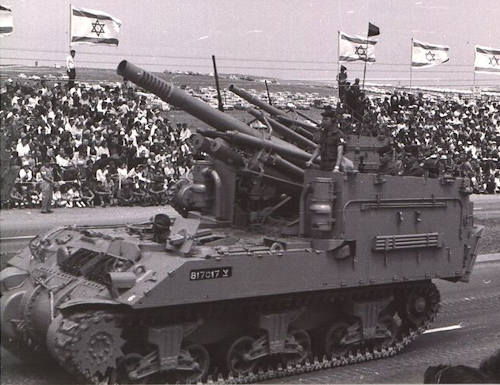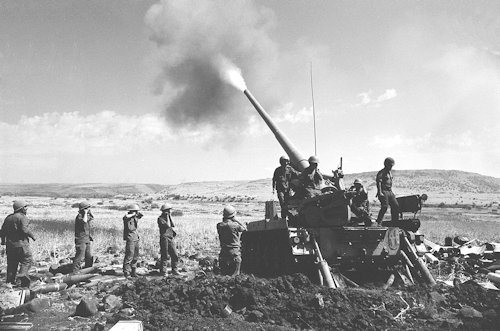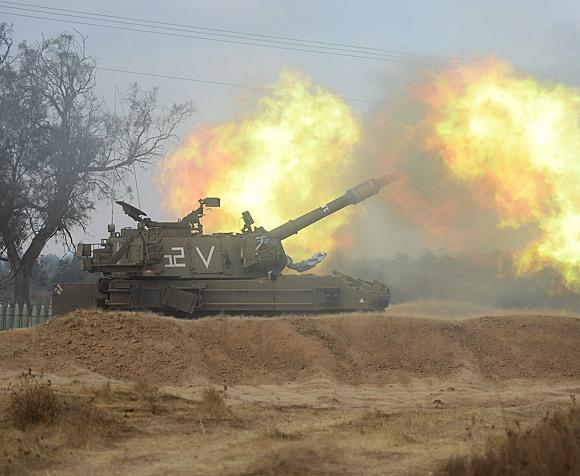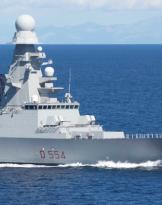The operation Breaking Dawn by the IDF in the Gaza Strip will continue until all objectives are achieved. This is what Israeli Prime Minister Lapid says, adding that "We are acting in a targeted and responsible manner, in order to minimize the damage for those who are not involved".
The IDF have so far attacked 140 targets in the Gaza Strip. Among these, a military tunnel of Islamic Jihad. Two military commanders of that organization were also eliminated: Tayassir al-Jabari, commander of the northern part of the Strip, and Khaled Mansour, commander of the southern zone.
In addition to the air strikes, Israel is using its own self-propelled artillery, made up of the 109/5 mm "senior" M-155A39s. The Ukrainian conflict is highlighting how having a modern artillery is fundamental in a conventional conflict, however, even in an asymmetrical context, as demonstrated by the IDF, it can be an effective tool for the suppression of sensitive targets.
Historically, Israelis have always favored the use of aviation, rather than self-propelled artillery, for fire support to forces on the ground.
In the 50s, the Israelis employed a wide range of towed artillery in order to deliver the necessary fire support to their mechanized units, but they quickly realized that the artillery could not hold up with mobile units when they came. deployed in the desert. As a result, the IDFs acquired many 105mm self-propelled howitzers, such as the American M-7 priest and the French AMX Mk-61. Even then it was clear that the 155 mm projectile had superior performance compared to the 105 one, both in terms of range and terminal effect.
 The first 155 mm self-propelled vehicle to enter service with the Israeli Army in 1963 was the M-50 (photo), developed in France.
The first 155 mm self-propelled vehicle to enter service with the Israeli Army in 1963 was the M-50 (photo), developed in France.
It was essentially the chassis of the American tank Sherman, with the engine moved in front, to the right of the pilot, to allow the installation of the 50/155 mm French howitzer Modèle 30 (already used by the Israelis in the towed version), in an open compartment in the rear part of the hull. The howitzer employed a HE projectile weighing 43 kg, with a maximum range of about 18.000 meters.
The M-50 had a crew of 8 and a laden weight of 31 t. the main disadvantage of the self-propelled machine, used for the first time in the Six Day War of 1967, consisted in the lack of any protection for the gunners from shrapnel and small arms fire, being the vehicle in the open sky.
Subsequently, the self-propelled L-33 was adopted (so called from the length in calibers of the gunshot), produced in Israel by Soltam and used for the first time in the Yom Kippur War in 1973. It too used the hull of the Sherman, in the M4A3E8 version, equipped with horizontal conical spiral spring suspensions (HVSS), instead of vertical (VSS) as in the M-50 model, with the effect of improving mobility on uneven ground. The self-propelled machine uses the 68/155 mm M-33 howitzer, almost identical to the towed piece and is installed on the front. The howitzer uses a HE projectile weighing 43 kg with a maximum range of 21.000 meters, on board there is a supply of 60 grenades and related charges, of which 16 are ready for use. The hull is made of welded steel and provides complete protection to the crew from shell shrapnel and small arms fire.
In the early 70s Israel received about 80 M-107 175mm self-propelled howitzers and 48 M-110 203mm self-propelled howitzers from the United States. The first fires a HE shell with a maximum range of 32 km, while the second fires a HE shell with a maximum range of about 17 km.

In the past, the Israeli Army used a special shot not used by any other country for the M-107. Developed in Canada and named the 175mm Extended-Range Sub-Caliber (ERSC). This projectile has a weight of 56 kg, of which 13,6 kg of high explosive, the maximum range reaches 40 km.
The M-107 was used in the Yom Kippur War (photo) to keep the Damascus airport unusable, since the target did not require accurate accuracy or a high rate of fire (about two rounds per minute).
In the 80s, Soltam developed a 155/52 mm self-propelled vehicle using the hull of the MBT Merkava Mk1, named Sholef. The self-propelled vehicle weighed 45 t and was equipped with GPS, inertial navigation and a computer for fire control, capable of firing even in motion. However, the IDF preferred to adopt an updated version of the American howitzer M-109 (already used in a few examples in the Yom Kippur War).
Currently, the most modern self-propelled howitzer employed by the Israeli Army is the 109/5 mm M-155A39.
Soltam recently offered the IDF a new version of the Sholef, on the hull Merkava Mk3, but too high costs prevent the program from continuing.
It would seem that the 6x6 ATMOS 2000 155/52 mm rotated system, also produced by Soltam, could have more luck, credited with a range of 41 km thanks to the use of the ERFB-BB (Extended Range Full-Bore - Base Bleed) project.
Photo: IDF / web












